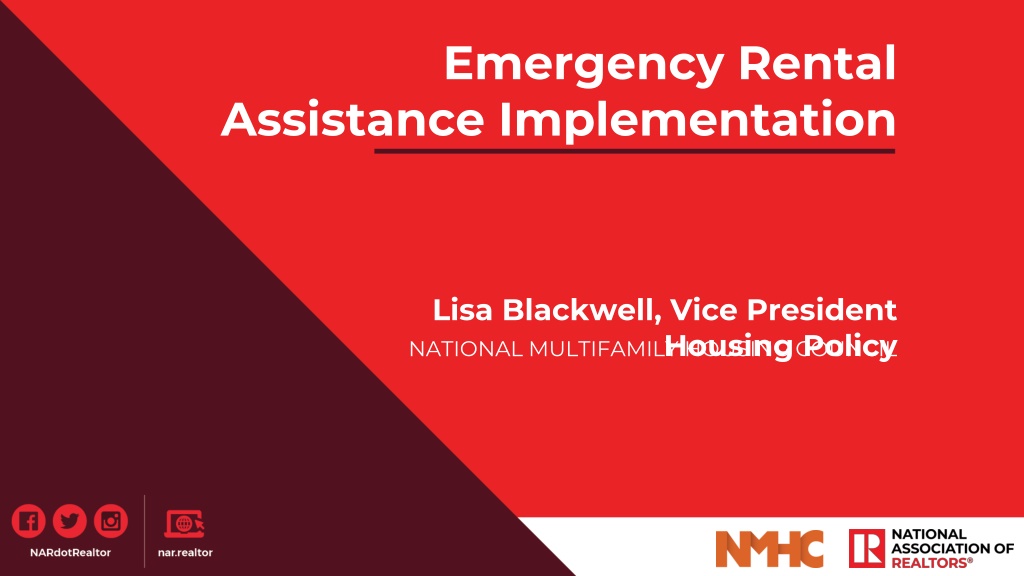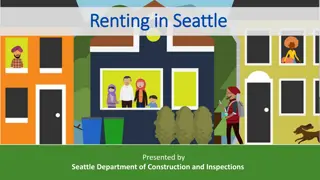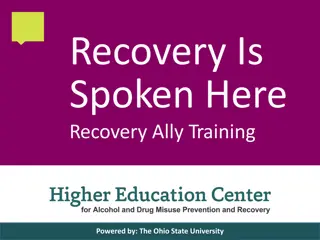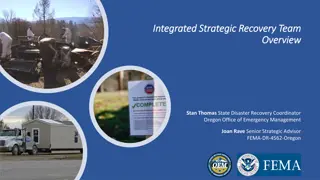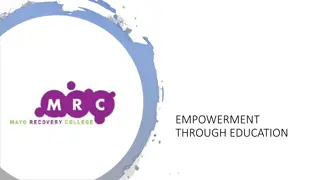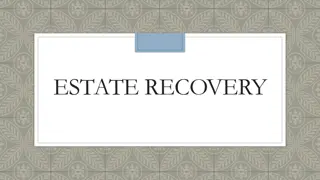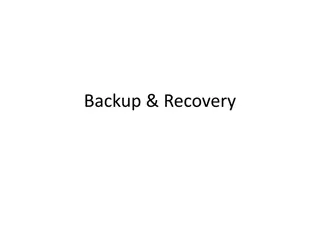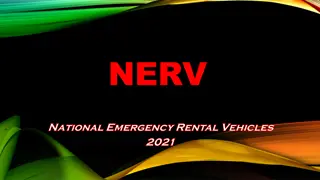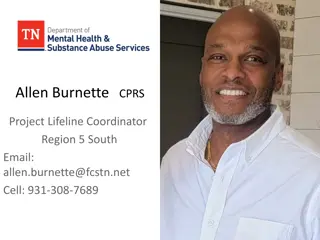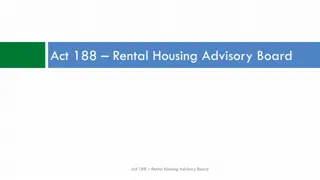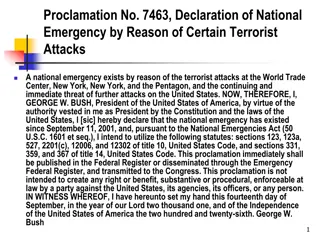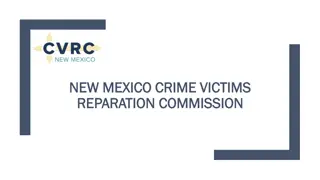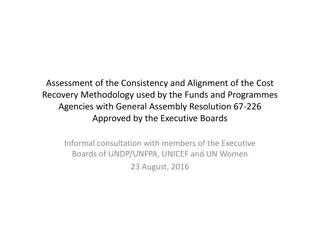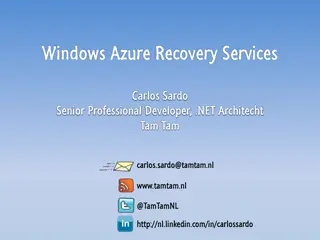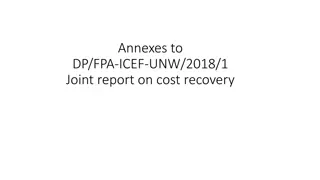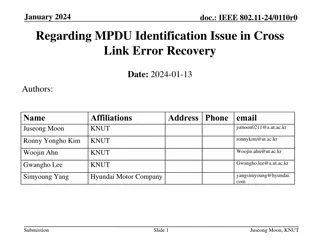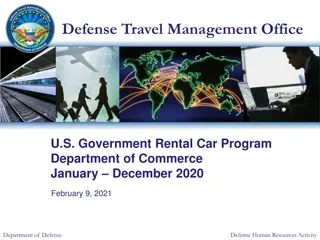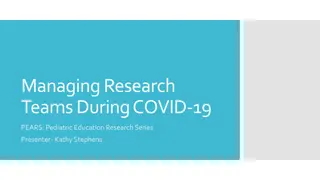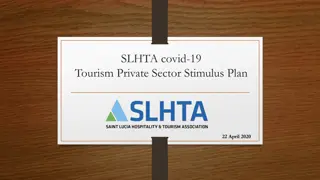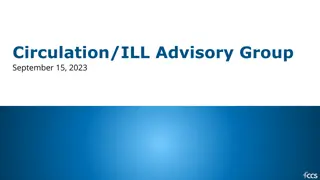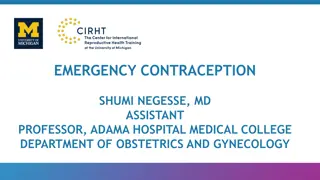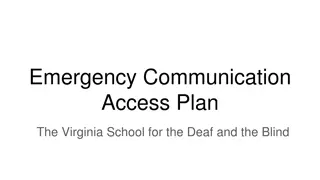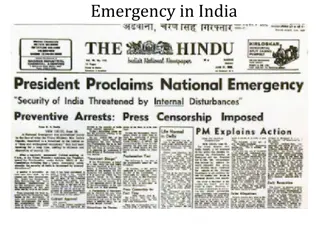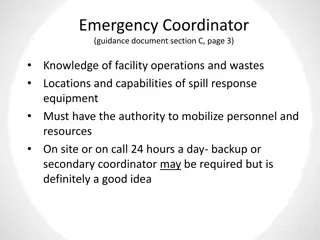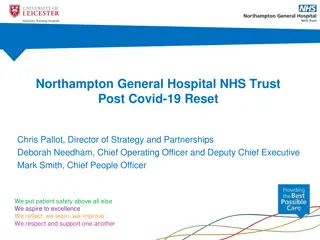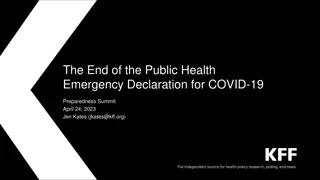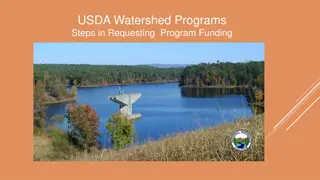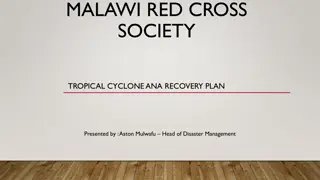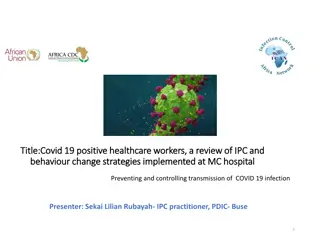Emergency Rental Assistance and COVID-19 Recovery Efforts by NMHC
NMHC, representing the apartment industry, provides key principles for eviction moratorium transition, member outreach for rental assistance, and collaboration in the real estate industry coalition. They focus on assisting residents financially impacted by COVID-19 through various support programs and initiatives.
Download Presentation

Please find below an Image/Link to download the presentation.
The content on the website is provided AS IS for your information and personal use only. It may not be sold, licensed, or shared on other websites without obtaining consent from the author. Download presentation by click this link. If you encounter any issues during the download, it is possible that the publisher has removed the file from their server.
E N D
Presentation Transcript
Emergency Rental Assistance Implementation Lisa Blackwell, Vice President Housing Policy NATIONAL MULTIFAMILY HOUSING COUNCIL
ABOUT NMHC NMHC represents the leadership of the 3 trillion- dollar apartment industry by providing apartment homes for 38.8 million Americans and contributing $1.3 trillion annually to the economy. Here, the prominent owners, managers and developers come together with the financiers, brokers and supplier partners to create thriving communities and collectively shape the future of our industry.
NMHC Issued Principles to Assist COVID-19 Recovery Efforts Eviction Moratorium Transition As the eviction moratorium expires, NMHC recommended apartment firms adopt the following principles: Encourage residents to seek rental assistance Offer solutions to help residents avoid eviction Provide notice of at least 30 days to residents before filing an eviction for non-payment Work with jurisdictions to break down artificial barriers Identify governmental and community resources to broadly help residents Communicate with residents
Emergency Rental Assistance NMHC Member Outreach to Residents COVID Related Outreach Payment plans Waived late fees Deferments and extended or flexible lease periods Cash for keys (compensation for vacating a unit) Free ability to charge rent on credit cards Forgiving rent Rental assistance funds Connecting residents with food banks, charities and other local resources ERAP Outreach Assist residents to secure rental assistance Outreach to every resident Letters, emails and door to door interaction Added dedicated staff
Real Estate Industry Coalition Accomplishments Direct Assistance for Renters & Property Owners $50 Billion in Emergency Rental Assistance Program (ERAP) Expanded unemployment insurance Direct stimulus checks for individuals and families Paycheck Protection Program and capital relief for depositories to work out loans Multifamily Mortgage Forbearance & Secured Federal Reserve Financing Facilities
Emergency Rental Assistance Program Implementation Recommendations Direct grantees to allow landlords to apply on behalf of a resident and/or initiate the application. Provide a mechanism to address non-responsive residents - It is common for resident who are significantly behind in rent to cut off communications with their landlord for fear of eviction or penalties. Provide for a process whereby owner documentation can be used to obtain rent payments for non-responsive residents. Require distribution of assistance to those up to 80% of AMI - Remind administering entities that while the statue does prioritize assistance for those at 50 percent of AMI, the statute provides benefits for renters in need who earn up to 80 percent of AMI. Provide flexibility with regard to demonstration of eligibility For those who participate in the program, a certification or affidavit of need should be sufficient. In addition, with regard to landlord applications on behalf of tenants, proof of consent should be easily demonstrable.
Emergency Rental Assistance Program Implementation Eliminate Extraneous State/Local Requirements Enable funds to be utilized without extraneous requirements that restrict housing provider participation in programs. Encourage states/localities to eliminate impediments such as: o Prohibiting the owner from applying on behalf of the resident; o Imposing additional eviction restrictions particularly those that interrupt the eviction process without certainty of resident eligibility for rent relief and those that inhibit eviction actions despite continued nonpayment of rent or compliance with payment plan terms; o Requiring waiver of late fees;
Emergency Rental Assistance Program Implementation Eliminate Extraneous State/Local Requirements Encourage states/localities to eliminate impediments such as: o Asking that the landlords not increase the rent after uploading all delinquent accounts until the program is able to service the community freezing rents until the administering entity can get to the application (with no timeline commitment); and o Requiring the owner to provide sensitive financial information to residents - Most landlords would prefer to minimize the public disclosure of the sensitive tax information included on the W-9 form, particularly smaller landlords whose social security number often serves as the tax identification number on their W- 9. Allow landlords to communicate sensitive information directly to the administering agency, easing owner's concerns, while also encouraging greater participation by landlords.
Emergency Rental Assistance Program Implementation Recommendations Regarding Administrative Concerns: Administering entities in some cases lack the staff to process the applications or provide assistance to residents or owners as to their application status. Allow for safe harbors by which states, localities, and program participants may operate in good faith and within the intent of the legislation. The overarching goal should be to assemble reasonable supporting documentation to enable the assistance to flow quickly and efficiently.
Emergency Rental Assistance Program Implementation Recommendations Regarding Administrative Concerns: Ensure broad distribution of funds across rural, suburban and urban markets, and to all property types small, medium and large including residents in manufactured housing communities and housing cooperatives. Establish Recertification Criteria - Establish criteria allowing those who have received assistance to recertify continuing need in future months. Upgrade/Streamline Technology One of the biggest impediments is the software administering entities are using to implement the program.
What has worked about emergency rental assistance so far and where has it worked? Virginia s Rent Relief Program (RRP) Allows Management Companies to Remit on Behalf of Residents - One key procedure of Virginia s RRP is allowing management companies to remit on behalf of residents with consent. The program approval process takes approximately 45 days with payment received within 15 days resulting in an approximate 60 day turn around. Centralized Program - Also contributing to the program s success is that the RRP is a centralized program rather than a patchwork of locally administered programs, allowing companies to apply easily on behalf of eligible residents altogether and according to one unified set of rules. Limited Documentation Burdens - Open communication channels and opportunities for coordination on applications have been essential to the Virginia program s success as certification and documentation requirements have been barriers to entry for renters who are seeking relief in other jurisdictions. Housing providers prefer to submit sensitive information, such as tax ID and bank information for online payments, directly to program administrators.
What has worked about emergency rental assistance so far and where has it worked? Colorado Emergency Rental Assistance Program (ERAP) program Allows Housing Providers to Begin the Application Process Colorado s programs allows housing providers to begin the application process. Once the owner or operator submits their portion of the application, program administrators then send an email to the resident for the individual to complete the rest of the application. Housing provider-led submissions speed up the application process significantly, as many rental assistance programs require tax documents, rent legers and lease agreements. Communication with Owner Community - Prior to the current ERAP program, newly minted to meet federal guidelines, Colorado s previous rental assistance program saw success as well. Working with the Colorado Apartment Association, Colorado distributed approximately $72 million to housing providers for delinquent rent under the Colorado Emergency Housing Assistance Program and Property Owner Preservation programs between August 2020 and February 2021. These programs were initially funded by the CARES Act and later supplemented with state funds.
What has worked about emergency rental assistance so far and where has it worked? Houston Harris County TX Harris County program format has been identified as an example to follow: Landlord information is preloaded into the system Allows resident to look up their property and apply Allows the owner and resident to see where they are in the process
How can we work together on the implementation of the Emergency Rental Assistance Program? Continue to work with the Administration, Congress and program administrators to ensure rental assistance funds are dispersed in a timely and efficient manner to those in need. Share resources and policy directives to enhance implementation efforts. Continue to identify areas where the program can be improved and/or areas where the program is working and share that information where appropriate with the Administration and administering entities. Leverage our networks to provide workable solutions to enhance implementation efforts. Continue to work with residents to secure assistance.
THANK YOU LISA BLACKWELL Vice President, Housing Policy National Multifamily Housing Council lblackwell@nmhc.org (202) 716-2451
